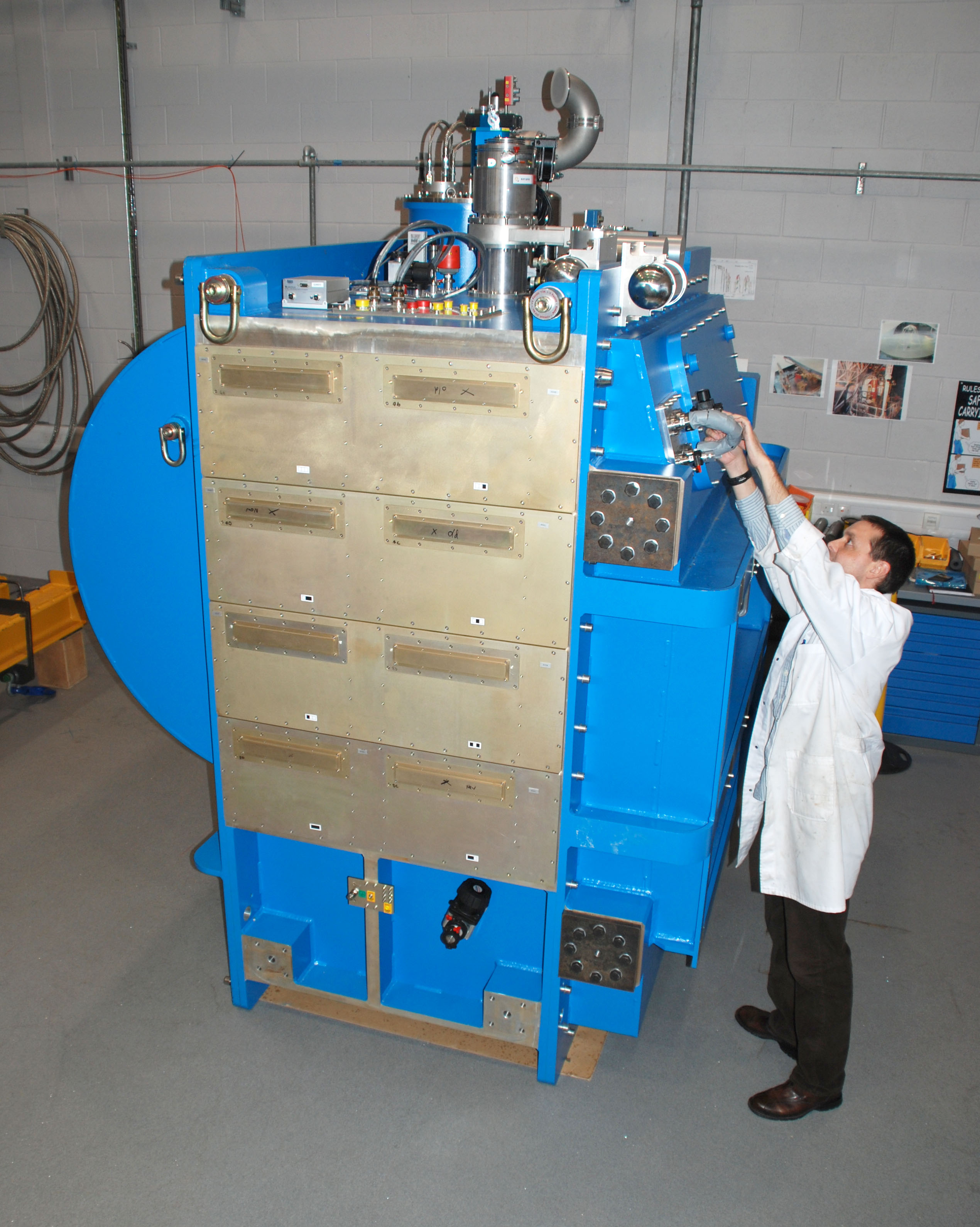The James Clerk Maxwell Telescope (JCMT), at the Mauna Kea Observatories in Hawaii, features a 15-metre primary reflector made up of 276 individual lightweight panels. It is the largest single-dish telescope that operates in submillimetre wavelengths. 
SCUBA 2, is a second generation instrument and the successor to SCUBA, which was designed and constructed at the Royal Observatory, Edinburgh in collaboration with Queen Mary, University of London.
Unlike previous submillimetre instruments used at JCMT SCUBA was an imaging device which acted as a camera and a photometer. It was a substantial improvement over previous submillimetre instruments, both in sensitivity and productivity. (SCUBA is now on display at the National Museum Scotland).
SCUBA 2 built on those successes and was commissioned on the JCMT between October 2009 and September 2011.
SCUBA 2 features a much larger field-of-view and sky-background limited sensitivity and can map large areas of sky up to 1000 times faster than its predecessor.
SCUBA 2 was a major innovation in submillimetre instrumentation. Incorporating state-of-the-art technology that allows for the realisation of the first large-format "CCD-like" camera for submillimetre astronomy.
UK ATC led the development of SCUBA 2 in conjunction with a number of international partners. Key amongst these were the National Institute of Standards and Technology (NIST) in Boulder, Colorado, USA, the Scottish Microelectronics Centre (SMC) in and the Department of Physics and Astronomy at Cardiff University.
Find out more about SCUBA 2 and JCMT.
